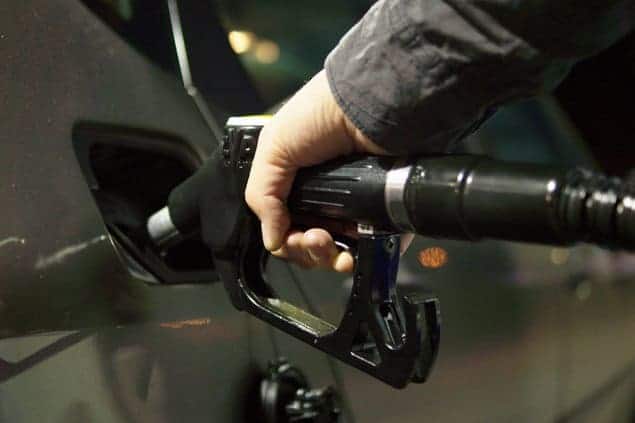Prices at the gas pump are suddenly surging, causing headaches for consumers and central bankers alike.
The two-day jump in gasoline prices — the biggest in a year — is combining with a rally in wheat and other agricultural commodities. A lasting spike in food and fuel prices would unravel progress on the inflation front, potentially forcing the Federal Reserve to continue raising interest rates.
The national average price for a gallon of regular gasoline climbed to a three-month high of $3.69 on Wednesday, according to AAA. That’s up by 5 cents from Tuesday, marking the biggest one-day increase since June 2022. And this comes just a day after a 4-cent increase, previously the biggest one-day increase in a year.
All told, gas prices have spiked 9 cents in 48 hours. Drivers haven’t encountered anything like that since last June.
“We’re seeing a sudden jolt,” said Patrick De Haan, head of petroleum analysis at GasBuddy.
Analysts blame a combination of mounting supply cuts by OPEC and Russia, extreme heat that has sidelined oil refineries and optimism about the health of the world economy.
Of course, pump prices are still well below where they were last summer. The national average was 64 cents higher a year ago and $1.33 higher at the peak in June 2022.
Commodity spike would ‘unnerve’ Fed officials
Still, higher food and energy prices could stop the inflation cooldown, or even reverse it. Lower gas prices have been central to progress on slowing price increases. And that progress has raised hopes that Fed Chair Jerome Powell and his colleagues could soon halt their war on inflation.
“Higher commodity prices could mean higher rates,” said Francisco Blanch, a commodities and derivatives strategist at Bank of America, in a note to clients on Wednesday. “A spike in commodity prices could reignite a run up in interest rates and restart the battle between oil and money.”
The Fed is widely expected to hike interest rates on Wednesday for the 11th time since March 2022, lifting key rates to the highest level in 22 years. But investors are betting this will likely be the final rate hike.
“If we’re going to have a one and done, we’re going to have to see inflation to cool. And that’s contingent on commodity prices,” said Joe Brusuelas, chief economist at RSM.
Brusuelas said rising food and fuel prices would be problematic.
“That could really unnerve policymakers,” he said.
War in Ukraine lifting grain prices
Just as oil prices have jumped to three-month highs, prices for agricultural commodities are on the rise after Russia terminated a crucial deal that allowed the export of Ukrainian grain and launched strikes on key port and agricultural facilities. Wheat futures have climbed to five-month highs this week.
The IMF warned on Tuesday that grain prices could rise by 10% to 15% because of the collapse of the grain deal.
“Ukraine is one of the breadbaskets of the planet,” said Robert Yawger, vice president of energy futures at Mizuho Securities.
Yawger noted that soybean futures have also climbed sharply amid concerns about high heat hurting crops in the United States.
Hurricanes and heat waves
The inflation situation is, to some extent, at the mercy of Mother Nature.
High heat has derailed operations at some major US refineries, according to analysts, limiting their production of gasoline, jet fuel and diesel at a time of high demand. That’s a concern because gasoline inventories are especially low for this time of the year.
ExxonMobil told CNN on Tuesday that one unit at its Baton Rouge refinery is undergoing maintenance.
“We’re working to complete the maintenance as quickly as possible and continue to meet customer contractual commitments,” an ExxonMobil spokesperson said.
De Haan said that even a 20-minute power outage at a refinery can delay supplies for days.
“Refineries are exposed to the elements. Just like humans, they don’t thrive in 115 degrees,” De Haan said.
Beyond high heat, hurricane season looms. De Haan warned that a major hurricane that strikes the US Gulf Coast could lift gas prices to $4 or even $4.25 a gallon.
“It’s a question of what Mother Nature will throw at us,” he said.

